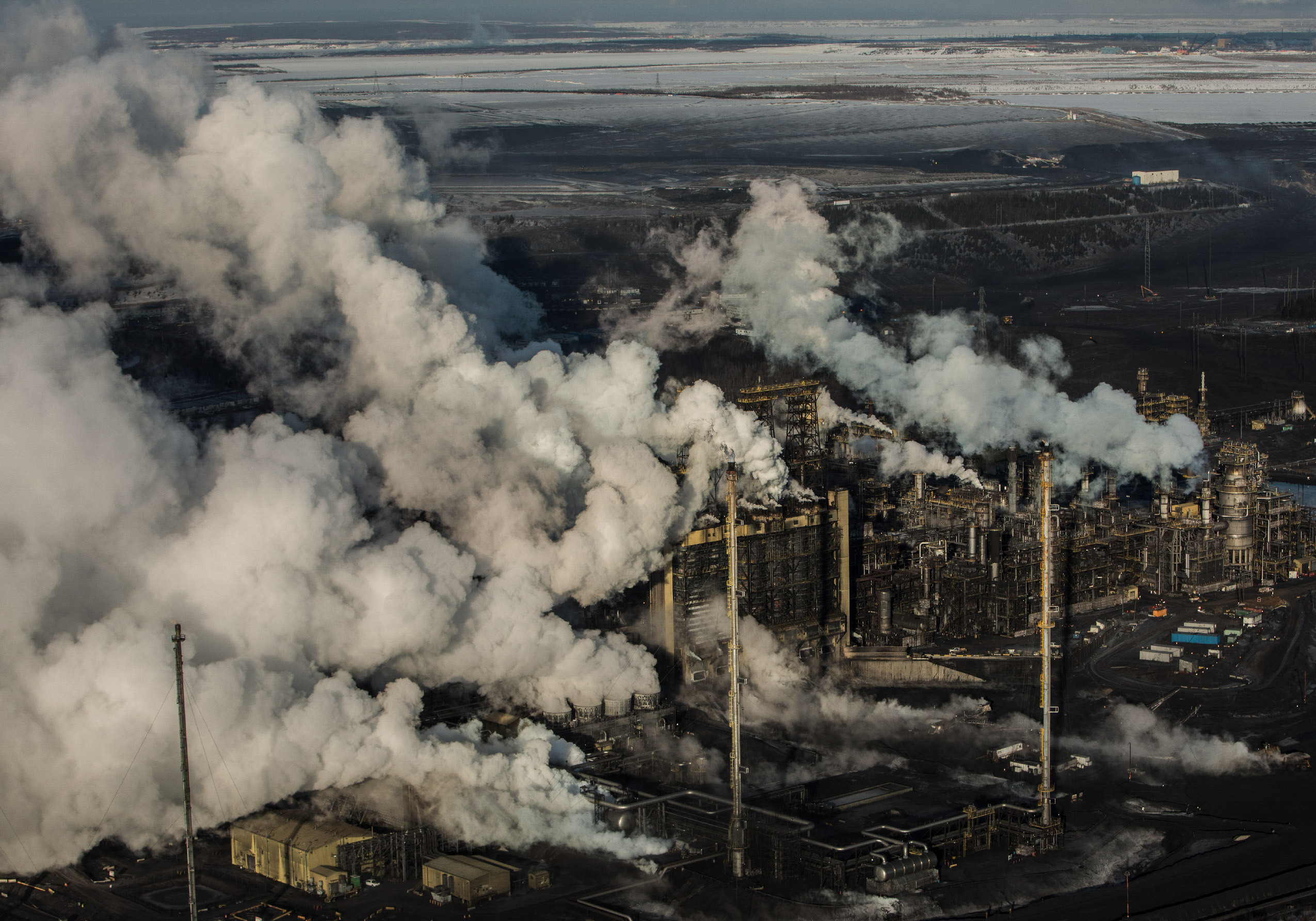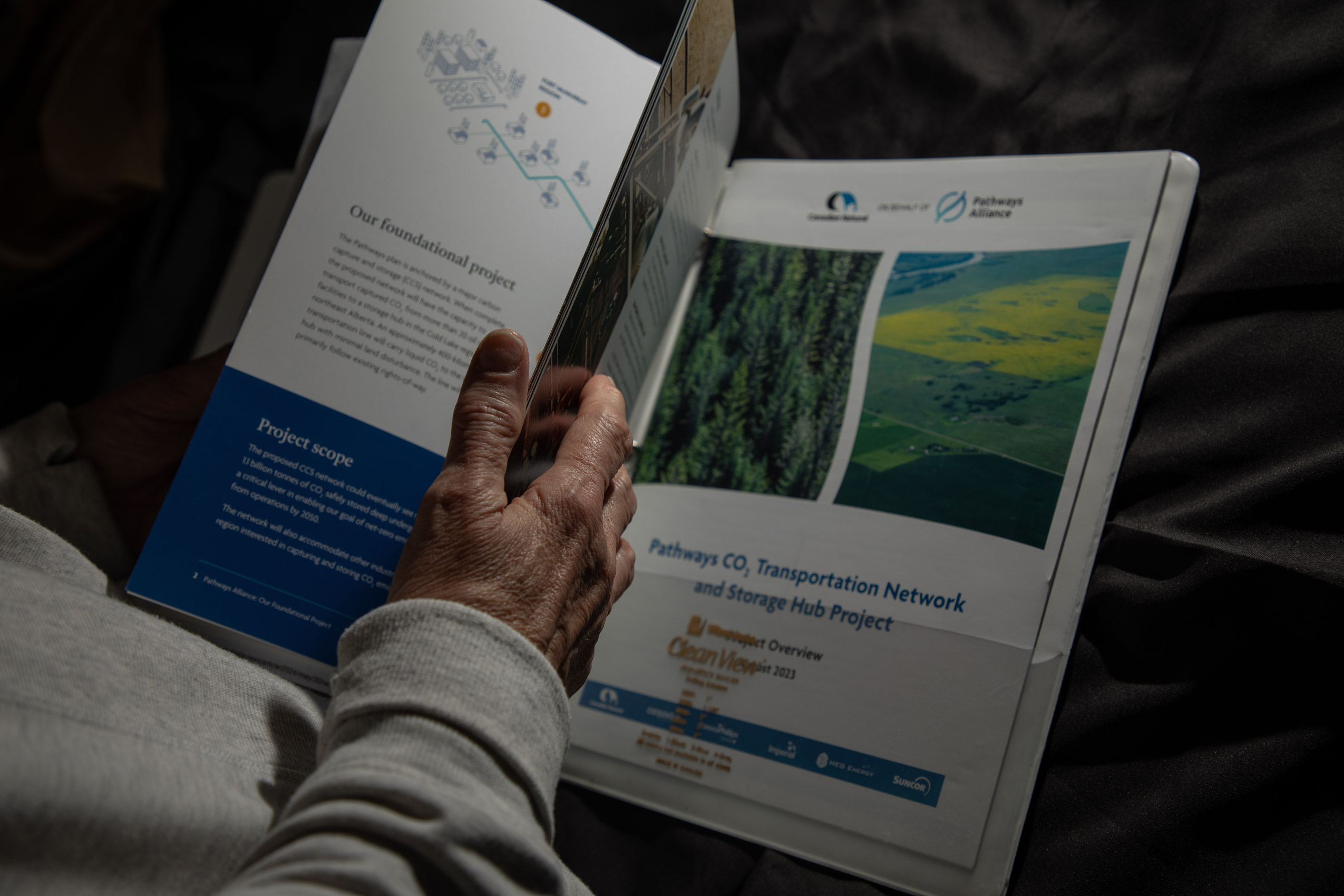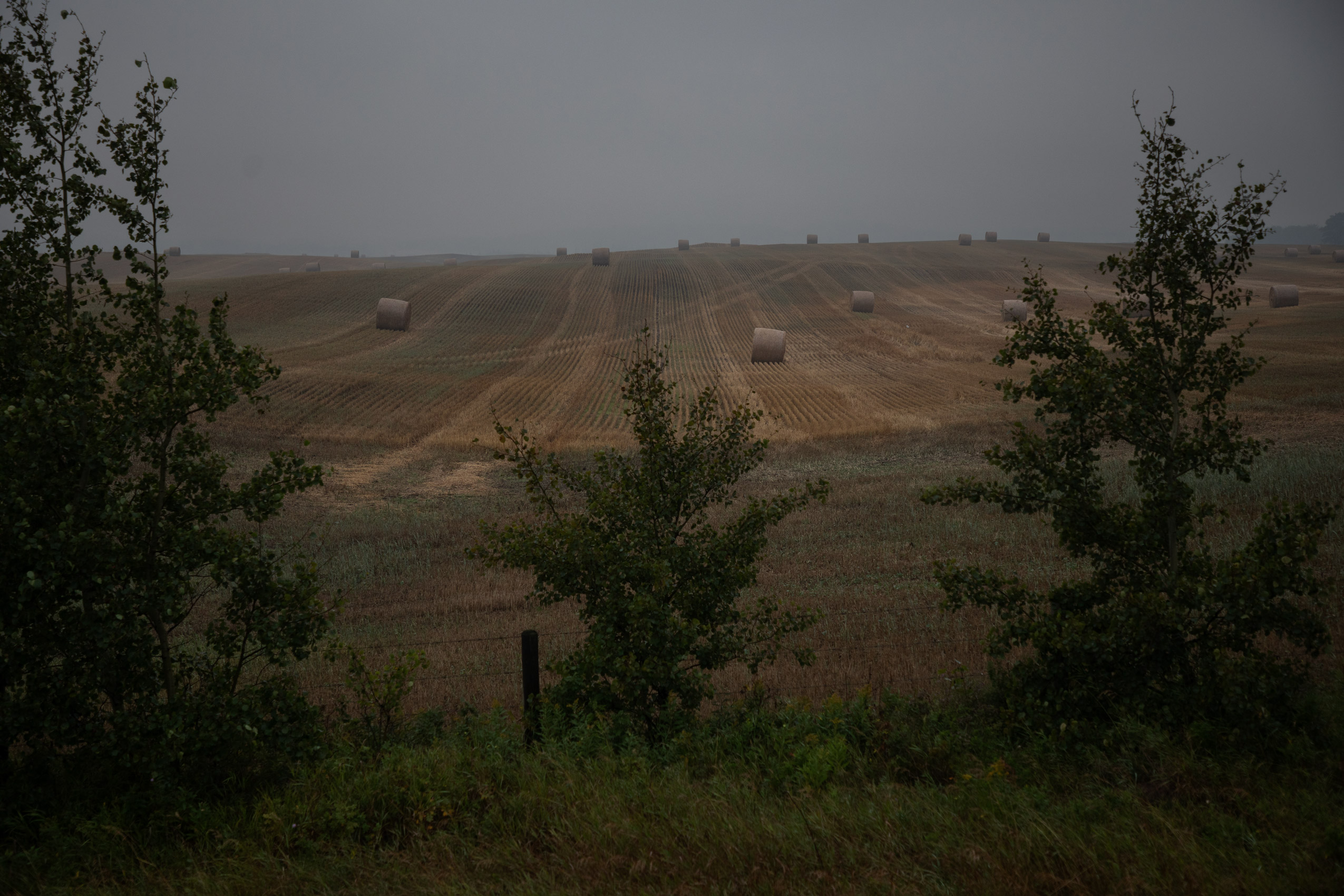
Drawing (on) a decade of climate change in the North
Artist Alison McCreesh’s latest book documents her travels around the Arctic during her 20s. In...
Get the inside scoop on The Narwhal’s environment and climate reporting by signing up for our free newsletter.
The massive $16-billion carbon capture plan proposed by Pathways Alliance — a group of the largest oilsands companies — will not undergo a provincial environmental assessment, according to a letter from the Alberta Energy Regulator dated Oct. 25 and provided to The Narwhal.
Pathways filed its first regulatory application for the project, which will include a 400-kilometre carbon dioxide pipeline, to the Alberta Energy Regulator in March.
In May, a group of landowners, a First Nation and environmental groups requested an environmental assessment. The project aims to bury 10 to 12 megatonnes of carbon dioxide deep underground each year, roughly equivalent to the carbon pollution emitted by the oilsands every six weeks.
The group, which includes Athabasca Chipewyan First Nation, the Alberta Wilderness Association, Climate Action Network Canada, Environmental Defence Canada and the No to CO2 landowners’ group, requested an assessment to “ensure that the project does not have significant adverse impacts on the regional environment and local communities, including on Aboriginal and Treaty Rights.”

A letter from the regulator to the group, dated Oct. 25, says the agency considered details about the proposed activity such as its location, size and complexity, and other public concerns that have been expressed, and decided “that further assessment of the activity is not required.”
“Therefore, a screening report will not be prepared, and an environmental impact assessment report is not required,” the letter reads.
The Alberta Energy Regulator confirmed an environmental assessment for the Pathways Alliance project would not be required in an email to The Narwhal on Wednesday.
A spokesperson added the regulator’s decision was “based on the current information about the project,” adding it “reserves the right to review this decision should different or new information become available.”
The spokesperson also noted the environmental impacts of the project will be considered under the regular application and approval process, adding that carbon capture projects involve multiple separate applications, which they said “allows focused insight into the details of a project and increases regulatory oversight by reviewing the details of each activity.”
The regulator, the spokesperson added, “is required to consider the social and economic effects of the energy resource activity as well as the effects of the energy resource activity on the environment” during the approval process.
In response to previous questions from The Narwhal, a spokesperson for the Alberta Energy Regulator noted the project does not automatically trigger a provincial environmental assessment. Regulations under Alberta’s Environmental Protection and Enhancement Act, first put into force in 1993, make no mention of carbon capture technology.
Under those regulations, other major projects, like an oilsands mine, refinery or a large hydro dam, would automatically undergo an environment assessment. In the absence of an assessment, the spokesperson said the risks associated with the project would be evaluated under the standard application process.
Local residents told The Narwhal they are concerned groundwater is at risk and that an explosion or a leak could mean asphyxiation caused by odourless, invisible carbon dioxide. Some First Nations have also voiced concern about implications for Treaty Rights, including the ability to hunt, trap and fish.
“The communities that would bear all of the risks from the project deserve to have real answers about the dangers posed to their families,” Julia Levin, the associate director of national climate at Environmental Defence, said in a statement on Wednesday. The statement was sent by the organizations that requested the environmental assessment in May, and offered their reaction to the regulator’s decision.
“There’s a reason the [Alberta Energy Regulator] doesn’t want to put the Pathways project through an environmental assessment. It is because it will expose the environmental impacts, the poor economic viability and the risks to human health,” Chief Allan Adam of Athabasca Chipewyan First Nation said in the statement.
“With our Treaty Rights on the line you can guarantee that [Athabasca Chipewyan First Nation] will fight this tooth and nail,” he added.
Spokespeople for Pathways Alliance and Alberta Environment and Parks did not not respond to questions from The Narwhal by publication time.
The Pathways project would be one of the largest carbon capture schemes in the world.
Quest, a carbon capture and storage project by Shell Canada near Edmonton, was required to undergo a joint federal-provincial environmental assessment in 2010, something Athabasca Chipewyan First Nation and environmental groups pointed out in their request to have the Pathways project assessed.

According to the Alberta government, environmental assessments are required “where the complexity and scale of a proposed project, technology, resource allocation or siting considerations create uncertainty about the exact nature of environmental effects, or result in a potential for significant adverse environmental effects” and help to “determine if the project is in the public interest.”
It’s unclear if the project will undergo a separate federal environmental assessment — sometimes carried out in conjunction with the provincial process — if officials determine the project has the potential for significant impacts within federal jurisdiction, including fish, migratory birds, species at risk and Indigenous Rights.
“An environmental assessment is an excellent way to test whether the Pathways claims are actually true — not just about its ability to reduce emissions and help address climate change, but to do so safely and cost-effectively, particularly given all the taxpayer money they want to spend,” Matt Hulse, a lawyer at Ecojustice, said in the statement on Wednesday. “With Alberta unwilling to assess this project, we hope that the federal government will step up.”
In January 2023, Pathways Alliance president Kendall Dilling told the federal government the group needed an “assurance” that its proposal “would not require a federal review under the Impact Assessment Act.”
A few weeks later, staff at the Impact Assessment Agency of Canada, the government agency responsible for federal environmental assessments, were assigned to a working group with oil and gas industry officials, including at least one representative from the Alberta government — a deputy minister.
Environment and Climate Change Minister Steven Guilbeault told The Narwhal in April he did not grant Pathways’ wish to skip a federal review — and that doing so “would circumvent our laws.”
Guilbeault also told The Narwhal in April “there’s no project to speak of right now.”
It’s also unclear if Pathways gave any additional details to government officials about their plans in the period after Guilbeault made those comments.
Jaclyn Sauvé, communications advisor for the Impact Assessment Agency of Canada, said in an email that Pathways Alliance would be responsible for verifying whether its proposal would be subject to federal assessment, noting the agency “has not received any information to indicate this proposal includes any designated physical activities that would make it subject to the [Impact Assessment Act].”
Sauvé added Pathways “is encouraged to contact [the Impact Assessment Agency of Canada] so that we can assist in verifying [its] interpretation.” This portion of the statement was nearly identical to a statement sent by the agency in May. Guilbeault’s office said the minister didn’t have any further comment beyond the statement provided by the agency.

Whatever extra information has been offered to provincial or federal government officials, the public has been unable to see it. Over the summer, Pathways scrubbed its website and social media feeds of much of the information it had provided about its project proposal, citing new federal provisions meant to crack down on greenwashing.
Meanwhile, some aspects of the government’s discussions with oilsands companies behind closed doors are possibly being shrouded in secrecy after federal officials agreed to a non-disclosure agreement.
The outcome of the next federal election, which will occur within the next year, could eventually change how environmental assessments at that level are carried out.
The Conservative Party of Canada, currently the official Opposition, plans, if elected, to replace the federal government’s “anti-resource bureaucracy” with an approval process that would “green-light” carbon capture and storage projects, as well as fossil fuel projects that produce liquefied natural gas, or LNG, according to deputy leader Melissa Lantsman.
Conservative Leader Pierre Poilievere has made it clear that means he would repeal the federal environmental assessment law, previously known as Bill C-69, which he’s called an “anti-development law.”
Pathways Alliance has been lobbying the federal government for more legal, regulatory and financial support since soon after the group was formed in 2021.
The project would benefit from a federal investment tax credit for carbon capture and storage, but Pathways has said that isn’t enough and it needs more help.
The group has been negotiating with a federal financial agency, the Canada Growth Fund, for additional support. This week, the Globe and Mail reported the fund and the oilsands group are nearing a deal.
Some of the oilsands companies in Pathways are among the largest corporations in Canada, reporting billions of dollars in profits in recent years.
Updated Oct. 30, 2024, at 4:43 p.m. MT: This story was updated to include comment from the Alberta Energy Regulator.
Updated Oct. 31, 2024: This story was updated at 11:55 a.m. MT to include comment from the Impact Assessment Agency of Canada and again at 1:16 p.m. MT to include a statement from the groups that requested the environmental assessment.
Get the inside scoop on The Narwhal’s environment and climate reporting by signing up for our free newsletter. On March 17, federal Conservative Leader Pierre Poilievre...
Continue reading
Artist Alison McCreesh’s latest book documents her travels around the Arctic during her 20s. In...

I’ve watched The Narwhal doggedly report on all the issues that feel even more acutely...

Establishing the Robinson Treaties, covering land around Lake Huron and Lake Superior, created a mess...
